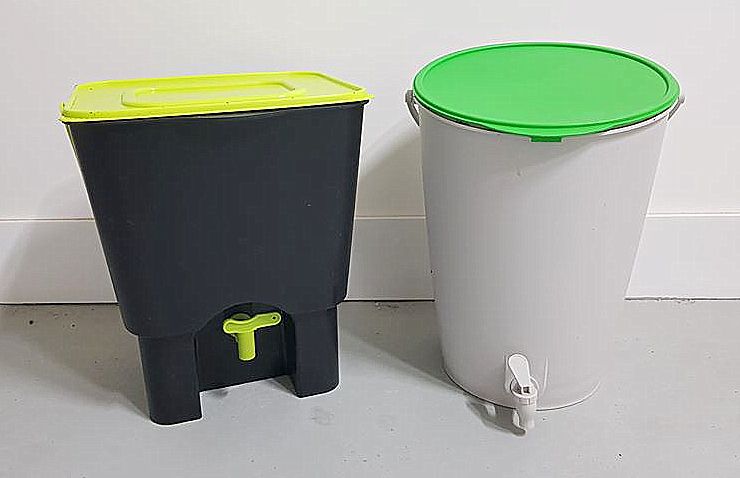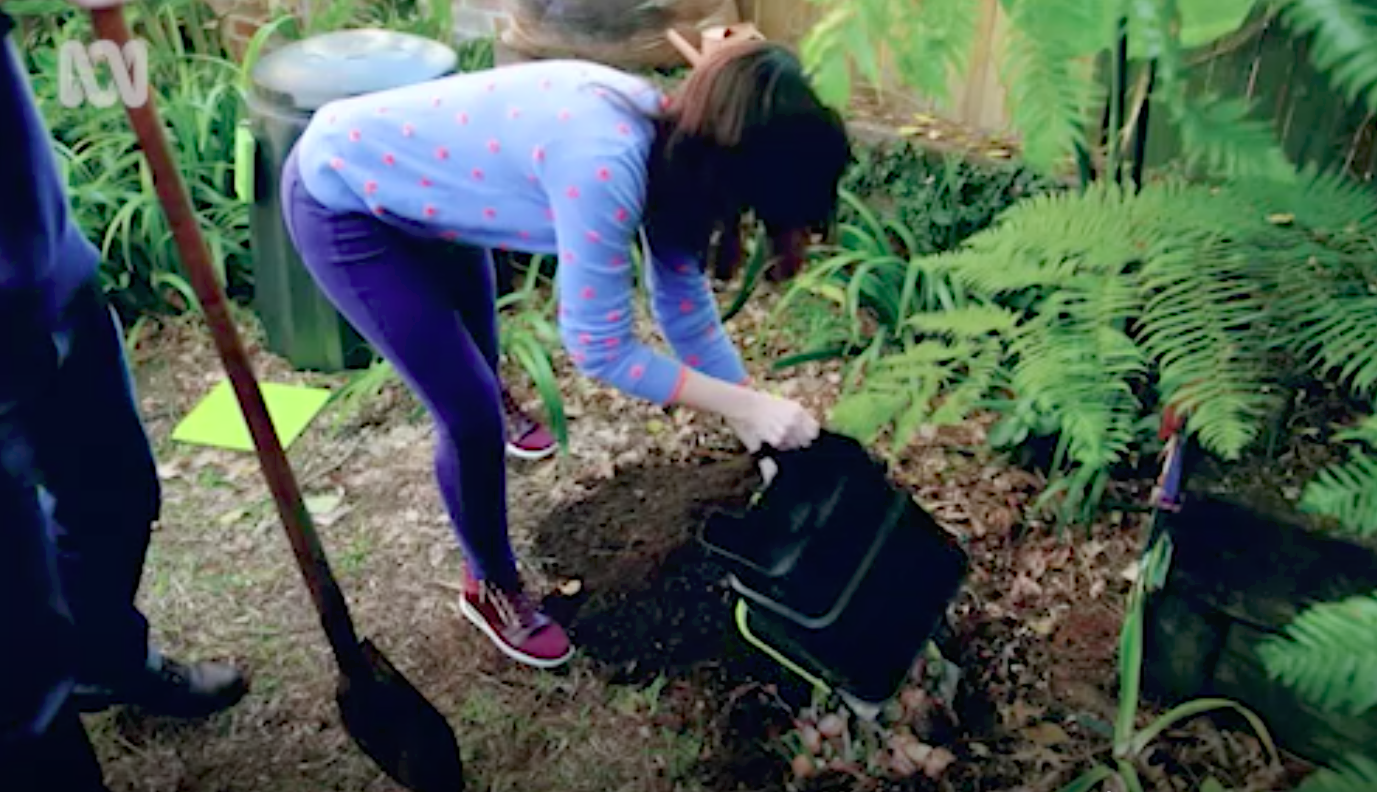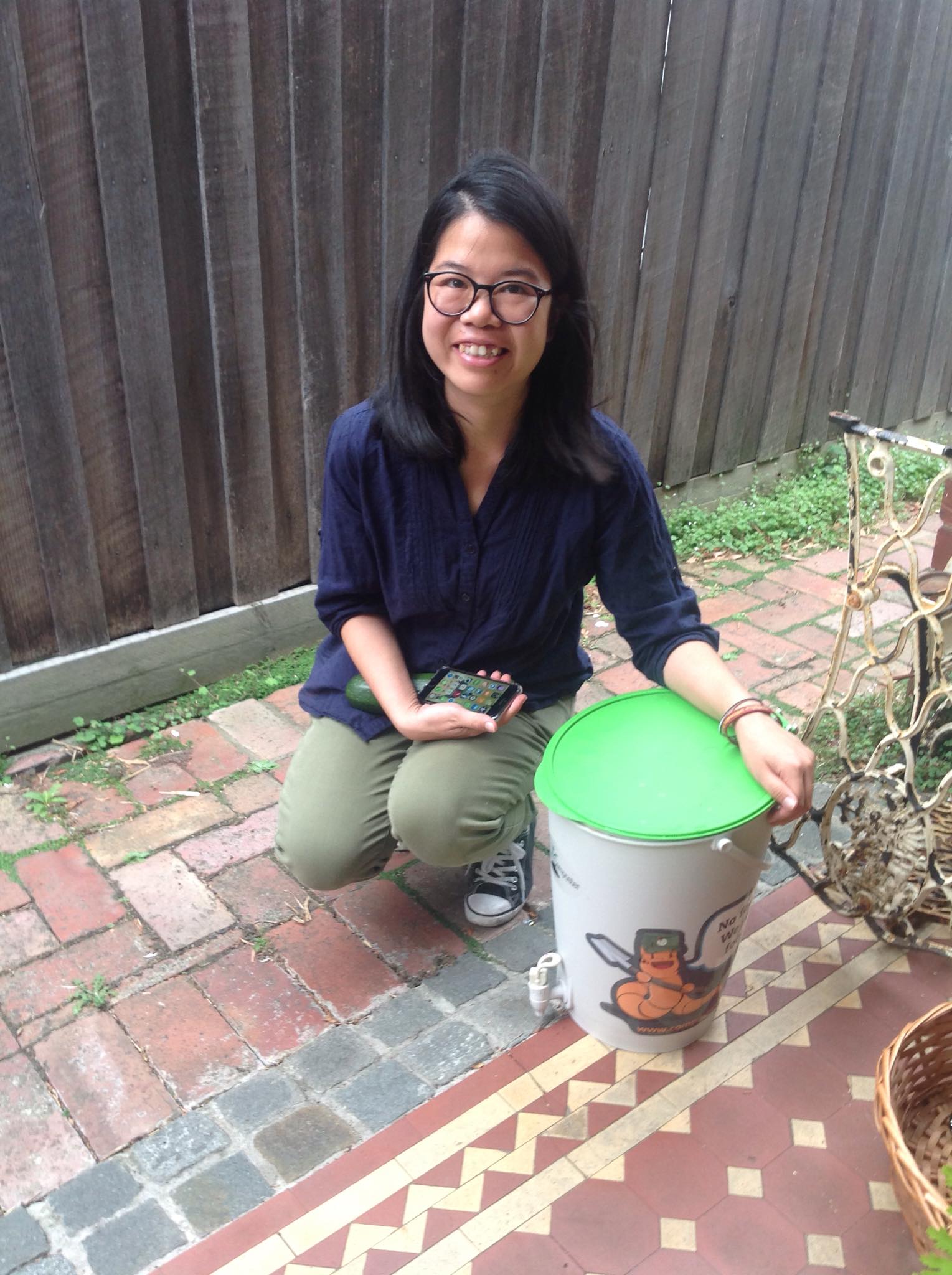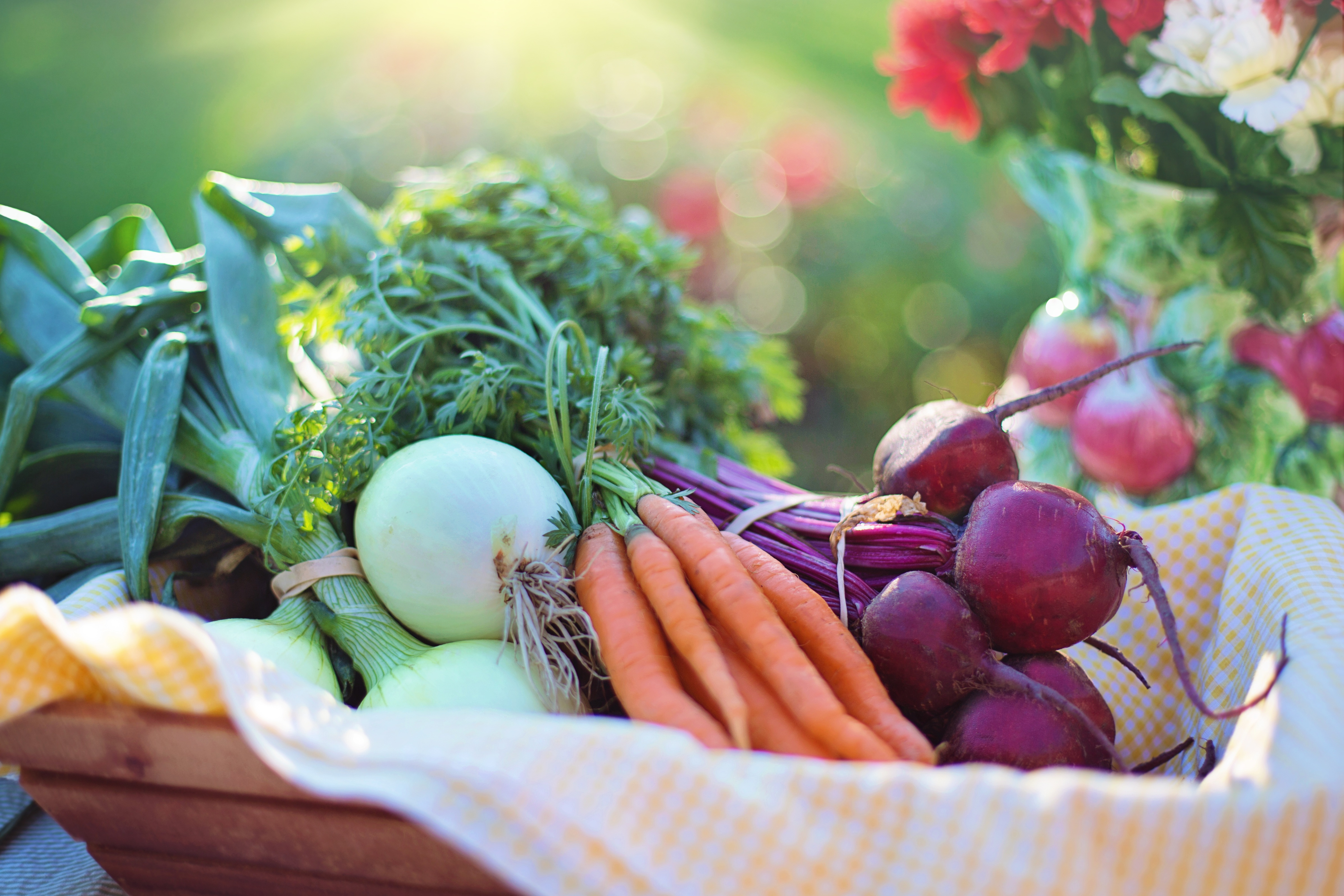Why You Want To Know About The Bokashi Method
‘Bokashi’ is an alternative method of organic waste recycling which breaks down food scraps through anaerobic fermentation using micro-organisms. It is the perfect small scale countertop alternative composting system that results in nutrient rich valuable soil building product, perfect for all you no fuss greenies looking to reduce your environmental impact and play a positive role in regenerating soil humus. Read on to learn about the magic of Bokashi or scroll to the bottom of the page from some ShareWaste tips from our experienced Donors and Hosts.
Bokashi is a system of processing food waste into valuable nutrient by way of fermentation
 Picture credit: Erin Conway
Picture credit: Erin Conway
“Imagine Bokashi as kombucha for your garden. It's full of amazing microorganisms and nutrients for your soil and as it's partially decomposed, it will break down very fast in your compost bin or pile" Katrina
Bokashi Basics: How it works! The Bokashi method is as simple as it gets. Food scraps are placed in an airtight container and covered with a scattering of inoculated material (anaerobic fermentation microbes), usually bran. Once covered with the Bokashi bran, the food scraps are broken down, fermented and effectively “pre-composted” or, pickled. During the breakdown process, a small amount of liquid byproduct is produced which is high in nutrient and can be used as liquid fertiliser. Since fermentation is much faster than composting, the Bokashi system can produce fermented material in as quick as one week!
Meat, fish, bones, diary–Bokashi method is suitable for food waste
The benefit of this method is that you can ferment just about anything! E.g. meat, fish, grease, bones, to dairy products and even baked waste. Once processed by anaerobic microbes through Bokashi, these pre-composted materials can be included in your regular active composting systems for added nutritional components or buried into soil. You no longer have to contribute ANY organic kitchen scraps to landfill.
"I use my Bokashi juice either diluted and watered onto my few pot plants or directly down the drain. I haven’t had any drain problems since using it" Danielle
If you are a ShareWaste compost host, accepting donations of Bokashi pre-compost and adding it to your pile or soil is an incredible addition to the overall diversity of nutrients and microbes in your compost system, and therefore soil/garden.
 ShareWaste donor Claudia showing how to bury Bokashi pre-compost. Watch full episode: https://www.abc.net.au/gardening/factsheets/compost-creatives/10396910
ShareWaste donor Claudia showing how to bury Bokashi pre-compost. Watch full episode: https://www.abc.net.au/gardening/factsheets/compost-creatives/10396910
Picture credit: ABC Gardening Australia
I like Bokashi but what if we don't have a garden?
For people who wish to use the Bokashi method but don't have an access to a garden, disposing of the pre-compost can be a challenge. This is where ShareWaste network can help you out! Once you have registered, you can contact your nearby ShareWaste host to see if they would be happy to accept your pre-compost. Many ShareWaste hosts truly appreciate Bokashi pre-compost because of its high nutritional value.
Bokashi can be a great stylish countertop alternative to conventional compost and waste processing
Bokashi Science:
The Bokashi mix is made up of inoculated grain and molasses. The three key strains of microbes used are: Lactobacillus spp., Saccharomyces spp. (common yeast), and Rhodopseudomonas spp.
These yeasts and bacteria are found all around us and can be harvested at home, or bought from Bokashi specialising companies. The same micro-organisms are also found in starter cultures when making sourdough, kombucha, sourkraut and yoghurt. Only this time, instead of being harnessed to feed us directly, we are using them to feed the soils.
"We live in an apartment and have now two bokashi bins. It means that one can sit and ferment while we fill the other. This way we don't waste any scraps" Erin
 Alexis Haw on her regular Bokashi visit to Katrina's garden.
Alexis Haw on her regular Bokashi visit to Katrina's garden.
Picture Credit: Katrina Forstner, http://www.buzzanddig.com.au
Bokashi Pre-compost: It is recommended to further compost your final Bokashi waste before adding it to your soil, as the raw product having just been fermented in anaerobic conditions can be quite acidic. Many people advise against planting your Bokashi pre-compost in direct contact with plant roots as it causes the plants stress and spikes their PH, so add it to your compost to avoid any potential damage. After 10 days of additional composting, the PH of your Bokashi pre-compost will level out, and it will turn into nutrient rich soil/compost. Another alternative is to bury the pre-compost directly into the soil (remember to avoid plant roots).
Bokashi and Worms (vermiculture): Personally, I have used Bokashi waste in my worm farm at home with no problem! When working with living wiggly workers they can be temperamental to change, so introducing small amounts at a time to accustom them is highly recommended. Small amounts of Bokashi waste in your worm farm works wonders, keep an eye on the system to gauge how they are reacting and when/if you can add more.
 Picture Credit: @losperrosurbanfarming
Picture Credit: @losperrosurbanfarming
Bokashi is easy to use , cheap and affordable , and extremely fast. It gains multiple yields (the final fermented material + liquid fertiliser) and required very little maintenance. If you are looking to reduce your environmental impact and play a positive role in regenerating soil humus, but lack the space and/or time to commit to worm farms and compost bin, Bokashi bins were made for you!
Troubleshooting
The various Bokashi literature indicates the difference between a “sweet and sour odor,” indicating fermentation akin to the smell of sourdough culture, and a “foul odour,” indicating decay. If a Bokashi bin begins to smell foul, it may be as quick a fix as adding more microbial mix and making sure liquid is draining out of the bins faucet. If this does not rectify the problem, it may be time to accept something has gone wrong, thoroughly rinse out the bin, and start again.
Are you an apartment dweller? Here are two important things to consider before you decide for the Bokashi method:
Bokashi isn't odour-free but the odour shouldn’t be foul. If your Bokashi bin is closed and you can still smell it, you are probably doing something wrong. The fermentation process can result in quite a strong sour smell so consider your housemates or flatmates before introducing a Bokashi to your home. If you have a balcony, the best place for your new Bokashi will be there.
“We accept donations through ShareWaste and also use the Bokashi method ourselves. People can be turned off by the smell of Bokashi but after a few goes, I’ve found that if you have a terrible smell – you usually aren’t doing something right” Amy
Your Bokashi will need to be emptied every 2 or more weeks, depending on the amount of waste your household produces and the size of the Bokashi. Find a place to dispose of your pre-compost before you opt for the Bokashi method (you can visit ShareWaste.com map for local drop-off spots).

Bokashi Tips for ShareWaste Hosts and Donors
- Before you put any scraps in your Bokashi bin, please make sure there are no forgotten fruit stickers.
- Every Bokashi Donor appreciates a rinse of their Bokashi (the bin can smell a little ripe). Organising a time for drop off between Host and Donor or access to an outside tap are always helpful.
- Bokashi waste is fermented, and thus not a final product of composting. It needs to be either composted or buried under ground (not directly onto plant roots).
- If you are a Host and happy to have your Donors deliver their waste whenever it suits them, please ensure they know what to do. Provide detailed instructions on what you accept in your compost, where to place the food waste, what tools they should use and what needs to be done before they leave. Showing your Donor the whole procedure on their first visit will help them get it right next time even when you won't be there. Simple written instructions left in your garden are also immensely helpful.
- The process of fermentation produces sour odour. Cover the bokashi pre-compost in your compost bin with some carbon or a hessian sack to minimise it. It does wonders!
ShareWaste is designed for people to meet but every Host is different and has a specific composting system and set-up in their garden. That is why our Hosts have various arrangements with their Donors to suit their individual needs. Whatever agreement you have is fine as long as it suits both sides. Happy sharing!
Many thanks to ShareWaste community members Suzi Shaw, Katrina Forstner, Chris Williams, Amy Lewis, Erin Conway, Danielle and many others for their valuable comments and feedback on the Bokashi method.